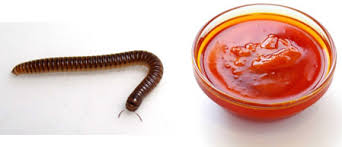Are you still using metal or non-stick pans for cooking? If so, did you know you may be exposing yourself, your  family, and even your pets to potentially dangerous chemicals, both directly and indirectly, with the potentially dangerous fumes these types of cookware can release?
family, and even your pets to potentially dangerous chemicals, both directly and indirectly, with the potentially dangerous fumes these types of cookware can release?
Poly- and perfluoroalkyl substances, or PFAS, are used to create the slippery surfaces of non-stick or Teflon-coated pans. Unfortunately, PFAS are fluorinated chemicals that the U.S. Environmental Protection Agency (EPA) has found to be “likely carcinogens.”
When heated, non-stick cookware and bakeware release a related chemical, perfluorooctanoic acid or PFOA, that is linked to thyroid disease, infertility, organ damage, and developmental and reproductive problems in lab animals.
Toxic Gases Potentially Hazardous for You, Your Family, and Your Pets
Surprisingly, it doesn’t take much heating to create a potentially dangerous situation for you and your family.
Hazardous toxins are produced after only two to five minutes of heating the pan. At 464 degrees Fahrenheit, the coating on non-stick cookware begins to break down and release toxins into the air.
Even scientific studies by the manufacturer of non-stick pans found that their cookware released 15 different types of toxic gases and particles. More than 200 scientists from 40 countries have signed the Madrid Statement, which warns of the hazards presented by PFASs.
Heating non-stick pans to high temperatures can be dangerous for your pets, too. The gas released from Teflon-coated pans is highly toxic to pet birds. If you’re preparing pet food in non-stick pans, keep in mind that toxicity effects can show up in your pet’s body earlier before yours because of their smaller size.
How About Aluminum and Stainless Steel Cookware – Are They Any Better?
While non-stick pans are likely the most popular choice in cookware today, stainless steel, aluminum, and cast iron pans are right behind them in popularity. Are they any safer to use?
Stainless steel accounts for a full third of U.S. cookware sales. These popular pans are made with alloys that contain nickel, chromium, molybdenum, carbon, and other metals. One concern with stainless steel is that the metal may not be as inert as many people believe, thereby potentially exposing you to the metal itself.
Stainless pans often have copper bottoms for more even heat distribution. While copper may be fine for an outer pan lining, never use a pan that uses copper for the cooking surface. Copper can leach out and potentially cause gastrointestinal discomfort.
Aluminum pans are of particular concern for everyday use. A reactive metal, aluminum reacts with salty and acidic foods and may release itself into your food during cooking or baking.
Why Use Ceramic Cookware
Ceramic cookware isn’t new. Their use dates back thousands of years to the ancient Greeks and Chinese. Although much more rudimentary than today’s ceramic cookware, even those living in America as far back as the 1600s used ceramic pots and pans. The Industrial Age introduced the manufacturing of metal and aluminum pots, which largely replaced pottery and ceramic pans.
As Americans became more aware of how their lifestyles impacted the environment in the 1960s and 1970s, ceramic cookware returned to the marketplace. This “green” choice in cookware caught on with environmentally conscious consumers. Decades later, consumers began focusing on ceramic cookware’s other benefits – its health benefits.
Authentic ceramic cookware, like my Mercola Healthy Chef Ceramic Cookware, is not made using PFOA. Nor does it contain any metals like lead, cadmium, aluminum, copper, nickel, chromium, iron, or any other heavy metals.
A true ceramic pan or dish will be made only with water and inorganic materials and minerals from the earth’s crust.
Because it doesn’t contain any metals, a ceramic pan is non-reactive and non-toxic. No odors or gases release into the air even when heated to extremely high temperatures.
Unlike the PFAS in non-stick cookware, ceramic pans are not associated with any ill effects on your thyroid, liver and other organs, brain, immune system, hormone levels, cholesterol levels, and weight. Ceramic cookware is safer for you, your family, your pets, and the environment.

There are many benefits of ceramic cookware, both for your health and for cooking. However, you must be sure you’re getting true ceramic cookware without toxic coatings or metals, or the same hazards may apply.





